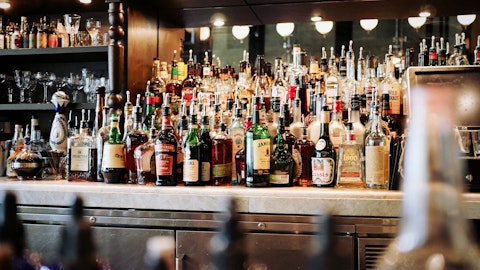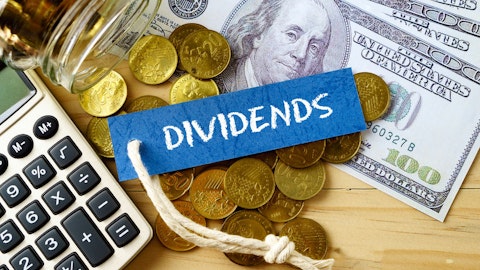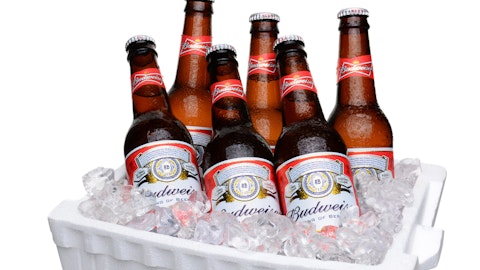The 11 largest beer companies in the world in 2017, pretty much control the world’s beer production, as they are collectively responsible for over 63% of the global production of beer and own the 10 Best Selling Beer Brands Heading Into 2017. Even more than that, because the industry has gone through a wave of mergers and acquisitions that has established several large beer conglomerates, the output of the top two producers of beer is larger than the volume produced by the other nine of the 11 largest beer companies in the world in aggregate.
Beer is one of the oldest consumed beverages in the world and continues to be one of the most popular around the world. Despite some recent slumps in consumption, the worldwide beer market is expected to grow. According to a Zion Market Research report, the global beer market is expected to reach $750 billion by 2022 from $530 billion last year.
With economic growth in many countries that has led to an increase of the middle-class population, the largest beer companies in the world in 2017 have been focusing on premium brands. According to the aforementioned report, light beer is expected to grow at a faster rate than strong beer, due to consumers becoming more aware of their health and choosing light beer due to its fewer calories and lower alcohol content. At the same time, the development of technology has helped to simplify the process of launching a microbrewery. As consumers are more willing to try new premium beers that come out of microbreweries, they are forecasted to register a higher growth rate.

Valentyn Volkov/Shutterstock.com
However, despite the strong long-term growth prospects, the global beer market is currently seeing a decline in consumption and production. According to a report from IWSR, global beer consumption declined by 1.8% to 185 billion liters last year. However, the decline was mainly due to economic troubles in some of the largest markets. In Brazil and Russia, the consumption of beer dropped by 5.3% and 7.8% respectively, as the former is facing political turmoil and corruption scandals that led to an economic crisis, while the latter saw its economy dwindle on the back of oil prices dropping and sanctions being imposed by the West. China, another key market for beer, that accounts for around a quarter of production, saw consumption decline by 4.2% as its economy has gone through a slowdown. In addition, Chinese drinkers are moving towards imported and premium brands, while older age groups are switching from beer to wine and spirits. Similar trends of declining beer consumption can be seen in two other key markets: Germany and the U.S.
Following trends in consumption, global beer production inched down by 0.2% to 1.96 billion hectoliters in 2016, after having shrank by 0.1% a year earlier, according to Barth Reports. The European Union saw a slight increase in production (of 1.0% to 401.52 million hectoliters), helped by higher output in Italy and Spain, while the U.S registered a drop in production, although North American beer output appreciated by 1.5% to 345.35 million hectoliters on the back of an increase in production in Mexico, whose key beer exporter is the U.S. China also saw lower production, which can be explained by consumers’ switch towards imported brands.
With this in mind, let’s take a closer look at the 11 largest beer companies in the world in 2017, based on their production volume, beginning on the next page.
11. Petropolis
Output Volume (million hectoliters): 21.4
Our list of the 11 largest beer companies in the world starts with Grupo Petrópolis, which is a Brazil-based beer maker that has six production facilities in the country and operations in Germany and Paraguay. The beer company produces beers under several brand names, including Itaipava, which is one of the most popular brands in Brazil, as well as Crystal, Lokal, Black Princess and Petra.

Pixabay/Public Domain
10. Groupe Castel
Output Volume (million hectoliters): 32.9
Groupe Castel (Castel Group) is a French beverage company that is the largest wine producer in Europe and the second-largest manufacturer of beer and soft beverages in Africa. The bulk of Groupe Castel’s beer is produced in Africa, where it expanded in 1990 with the acquisition of Brasseries et Glacières Internationales (BGI). Its most popular beer brands are Flag and Castel.
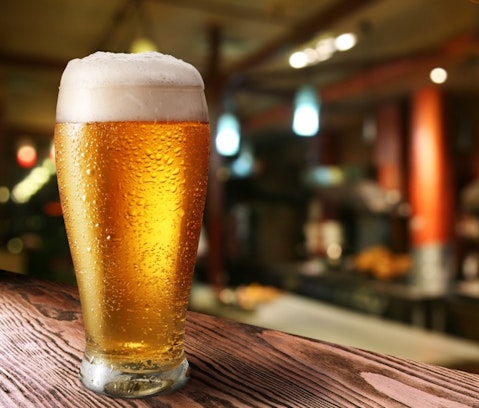
Valentyn Volkov/Shutterstock.com
9. Kirin
Output Volume (million hectoliters): 42.5
Japanese company Kirin is one of the largest manufacturers of beverages and its Kirin Brewery Company subsidiary is one of the largest beer companies in the world in 2017. Kirin holds stakes in Asia Pacific Breweries and Myanmar Brewery Ltd and owns Philippine-based San Miguel Brewery, Kirin Brewery of America, Kirin Europe and other subsidiaries. In Japan, Kirin sells Kirin Lager and Ichiban Shibori, which are among the most popular beer brands in the country, while its Kirin Tanrei is the most popular low-malt beer.

Ievgenii Meyer/Shutterstock.com
8. Yanjing
Output Volume (million hectoliters): 45
Yanjing (full name: Beijing Yanjing Brewery) is one of the top five largest beer makers in China, and produces a range of pale lagers under the Yanjing brand, as well as beers under the Liquan, Huiquan, and Xuelu names. Yanjing is owned by the state-controlled enterprise Beijing Enterprises Holding.

Pixabay/Public Domain
7. Asahi
Output Volume (million hectoliters): 59
Japan-headquartered Asahi Breweries is the largest beer manufacturer in Japan with a market share of over 35%. In Japan, the company produces a number of popular beers like Asahi Super Dry, a very popular brand in the country, as well as Asahi Draft, Asahi Gold, Asahi Stout, and Asahi Z. Following the merger between Anheuser Busch Inbev NV (ADR) (NYSE:BUD) and SABMiller, Asahi got its hands on a couple of breweries, including Grolsch Brewery, Peroni Brewery, and Meantime Brewery. Later it bought SABMiller’s former businesses in Poland, the Czech Republic, Hungary, and Romania.

Pixabay/Public Domain
6. Tsingtao Brewery Group
Output Volume (million hectoliters): 79.2
Tsingtao Brewery Group is the second-largest beer company in China, which owns production facilities in Qingdao and other parts of the country. Tsingtao’s most popular name is a standard pilsner that is sold under the Tsingtao Beer name and accounts for the majority of the company’s output. It also sells Tsingtao Draft Beer, Tsingtao Green Beer and the stronger Tsingtao Dark Beer. Tsingtao also exports its beer to other countries and its flagship beer is one of the most popular Chinese beers in the U.S.
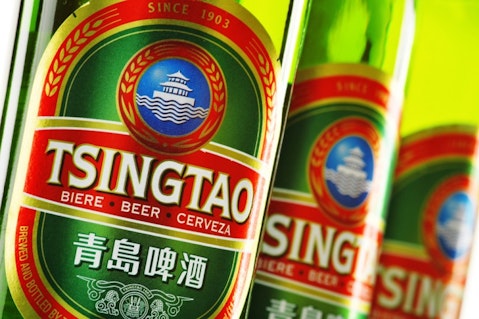
monticello/Shutterstock.com
5. Molson Coors Brewing Co (NYSE:TAP)
Output Volume (million hectoliters): 95.2
Molson Coors Brewing Co (NYSE:TAP) was formed following the merger of U.S-based Coors and Canadian company Molson in 2005. The U.S-incorporated company managed to expand and move higher among the largest beer companies in the world in 2017 on the back of the merger between Anheuser Busch Inbev NV (ADR) (NYSE:BUD) and SABMiller. Molson Coors Brewing Co (NYSE:TAP) acquired the remaining stake in MillerCoors, the joint venture that Molson Coors and SABMiller created in 2007. In this way, Molson Coors Brewing Co (NYSE:TAP) got full control of the Miller brand portfolio outside the U.S and Puerto Rico.

monticello / Shutterstock.com
4. Carlsberg
Output Volume (million hectoliters): 116.9
The Carlsberg Group is headquartered in Denmark but operates production facilities in many countries, including Russia, Ukraine, Kazakhstan, Latvia, Poland, and Sweden, among others. Carlsberg’s flagship beer goes under the Carlsberg brand, but it also owns the Tuborg and Kronenbourg brands, Belgian Grimbergen beers, and Baltika, Russia’s most popular beer. It also has a large portfolio of local brands, such as Birrificio Angelo Poretti in Italy, Holsten in Germany, Kasztelan in Poland, Gorkha in Nepal, and Wusu in China.

Faiz Zaki/Shutterstock.com
3. China Resources Snow Breweries
Output Volume (million hectoliters): 118.8
We are continuing our list of the 11 largest beer companies in the world in 2017 with China Resources Snow Breweries or CR Snow, which is the largest beer brewing company in China. Its flagship brand is Snow, which is one of the top-selling beers in the world. Other brand names of China Resources Snow Breweries include Blue Sword, Green Leaves, Huadan, Largo, Löwen, New Three Star, Yatai, and Zero Clock. China Resources Snow Breweries was a joint venture between China Resources Enterprise and SABMiller, but amid the latter’s acquisition by Anheuser Busch, China Resources bought the remaining stake.
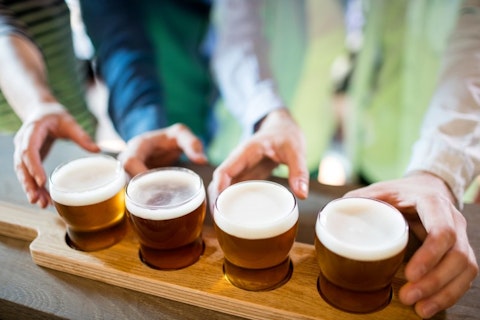
wavebreakmedia/Shutterstock.com
2. Heineken
Output Volume (million hectoliters): 200.1
Dutch brewing company Heineken is the second of the largest beer companies in the world in 2017, owning over 165 breweries in 70 countries. The company owns 250 international, regional, local, and specialty brands of beers and ciders. Heineken’s flagship beer is Heineken lager, followed by Amstel. It also makes beers under the Cruzcampo, Affligem, Starobrno, Tiger Beer, Zagorka, and Red Stripe names.
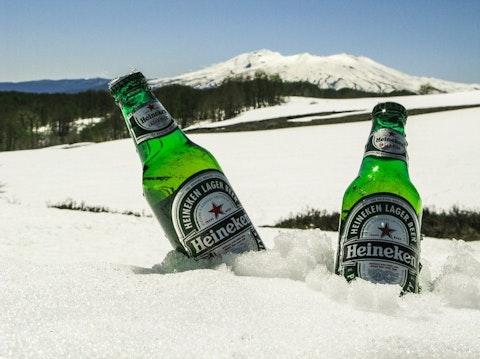
Pixabay/Public Domain
1. Anheuser Busch Inbev NV (ADR) (NYSE:BUD)
Output Volume (million hectoliters): 433.9
Leuven, Belgium-headquartered Anheuser Busch Inbev NV (ADR) (NYSE:BUD) is the absolute leader in the global beer market, with a market share of around 28%. It owns around 400 beer brands in 50 countries, having expanded significantly after the recent merger with SABMiller. Anheuser Busch Inbev NV (ADR) (NYSE:BUD)’s most popular global brands include Budweiser, Corona, and Stella Artois, as well as Beck’s, Hoegaarden, and Leffe. In the U.S, Anheuser Busch Inbev NV (ADR) (NYSE:BUD) controls around 45% of the beer market, with its leading brand Bud Light being the most popular beer in the country.
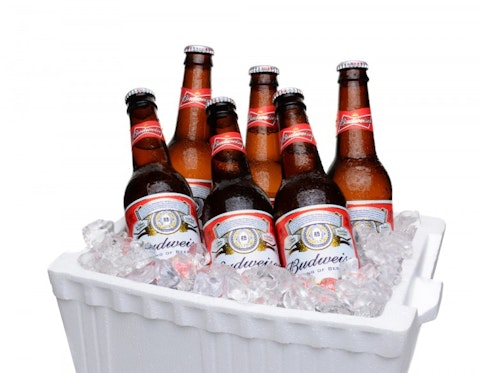
LunaseeStudios/Shutterstock.com
These are the 11 largest beer companies in the world in 2017 based on their output volumes. Most of the companies in this list are domiciled in the largest beer markets in the world and all of them own very large brand portfolios and have a global presence. Because of this diversification, these companies can survive through any temporary setbacks in the beer markets, while the huge amounts of cash they generate allows them to continue expanding even in saturated markets through mergers and acquisitions.
Disclosure: None
